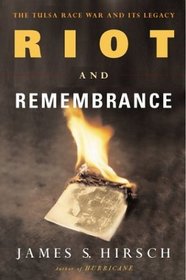Search -
Riot and Remembrance: The Tulsa Race War and Its Legacy
Riot and Remembrance The Tulsa Race War and Its Legacy
Author:
A best-selling author investigates the causes of the twentieth century's deadliest race riot and how its legacy has scarred and shaped a community over the past eight decades. — On a warm night in May 1921, thousands of whites, many deputized by the local police, swarmed through the Greenwood section of Tulsa, Oklahoma, killing scores of blacks, ... more »
Author:
A best-selling author investigates the causes of the twentieth century's deadliest race riot and how its legacy has scarred and shaped a community over the past eight decades. — On a warm night in May 1921, thousands of whites, many deputized by the local police, swarmed through the Greenwood section of Tulsa, Oklahoma, killing scores of blacks, ... more »
ISBN-13: 9780618108138
ISBN-10: 0618108130
Publication Date: 2/22/2002
Pages: 368
Rating: 2
ISBN-10: 0618108130
Publication Date: 2/22/2002
Pages: 368
Rating: 2
4.3 stars, based on 2 ratings
Genres:
- History >> Americas >> United States >> 20th Century >> General
- History >> Americas >> United States >> Black & African Americans >> History
- Nonfiction >> Social Sciences >> Sociology >> Race Relations >> America
- Nonfiction >> Social Sciences >> Sociology >> Race Relations >> General




